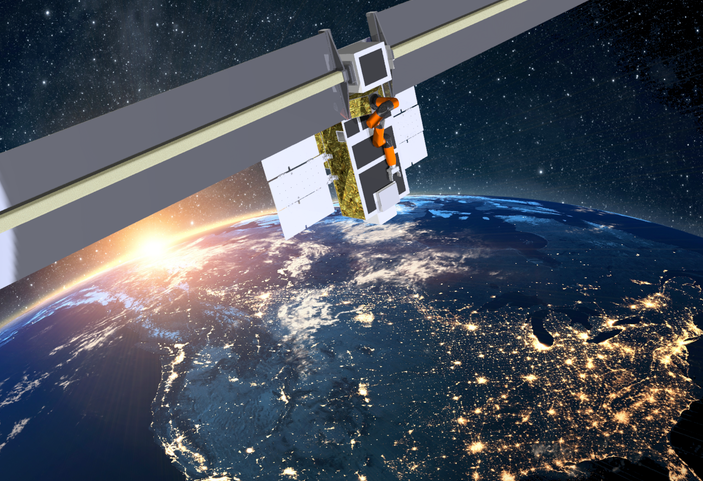Mission-critical space systems specialist Redwire has successfully demonstrated the capabilities of its Hybrid Architecture Laboratory Operational Environment (HALOE) to enhance US national defense.
The simulation proved HALOE’s potential to facilitate rapid and configurable digitally engineered space mission design that could be used for advanced mission planning to support Joint All-Domain Operations (JADO). The demonstration arose out of a contract awarded by the US Air Force Research Laboratory (AFRL) in October 2020, and highlights the potential of digital engineering environments within the space sectors.
“The successful demonstration of HALOE’s ability to ingest and harmonize current and soon-to-be-deployed assets across multiple domains into a single digital environment is an important milestone in achieving JADO,” said Stanley Kennedy Jr., Chief Architect of Redwire. “Realizing the end vision of HALOE will enable key decision makers to evaluate current and future capabilities for integration into existing architectures or envisioned architectures of the future.
“This first of a kind digital engineering capability for space has the potential to increase the speed and reduce the cost of future architecture deployments.”

Redwire’s rapid rise
Redwire was founded by private equity company AE Industrial Partners in June last year, and shortly afterward carried out a string of acquisitions, including spacecraft component suppliers and engineering service providers Adcole Space and Deep Space Systems, alongside off-world manufacturing specialist Made In Space.
In December, the firm continued its acquisition spree with the addition of payload developer Loadpath, whose technology has supported over 20 space flights for the likes of NASA and the Department of Defense (DoD).
Merging these companies together has provided Redwire with substantial in-orbit servicing, assembly, and manufacturing capabilities. So far, the firm has leveraged Made In Space’s additive manufacturing technologies to 3D print novel ceramic turbine blisks in-orbit on the International Space Station (ISS).
In April, Redwire announced its plan to go public on the NYSE via a Special Purpose Acquisition Company (SPAC) merger with Genesis Acquisition Corp, in a deal that values the company at around $615 million. With the merger potentially providing the firm with $170 million in liquid capital, the merger could deliver the backing needed for Redwire to continue expanding on its already substantial aerospace portfolio.

Successfully demonstrating HALOE
HALOE is built upon the Modular Open System Architecture (MOSA) framework of Redwire’s ACORN Digital Engineering software suite. ACORN has been developed to provide a scalable, rapidly reconfigurable, and closed-loop end-to-end digital engineering environment for the development of space systems.
Equipped with the same multidisciplinary design optimization abilities and agnostic interfaces of ACORN, HALOE makes it possible to integrate disparate systems within a simulation environment to rapidly reconfigure space systems. HALOE’s cloud-based architecture enables teams to work together remotely within virtual digital engineering environments, regardless of their location. This facilitates the configuration of multiple satellite constellations, ground stations, and disparate assets within a single simulation.
The simulation demonstrated as part of the AFRL contract is time-synchronized, supporting user-defined time steps to ensure all assets remain in lockstep for evaluation against specific mission objectives. According to Redwire, the advanced architecture could ultimately improve the fidelity of space system simulations while reducing development costs.
Essentially, the successful demonstration highlighted the potential for HALOE to bolster US national defense and space security, paving the way for faster and lower-cost future architecture deployments and more advanced mission planning.
“MOSA-based digital engineering technologies like ACORN and HALOE are the key to enabling future JADO,” said Maureen O’Brien, Senior Vice President at Redwire Mission Solutions. “At Redwire, we are at the forefront of digital engineering for JADO, and HALOE is one of the first major stepping stones towards implementing future National Security Space architecture.”

Leveraging digital engineering capabilities
Digital engineering environments are useful for the design, testing, and remodeling of products and processes in various scenarios, without the costs and risks that come with continually reproducing and testing physically manufactured components.
One way this is being utilized within the additive manufacturing sector is through digital twin technology, through which firms can simulate, optimize, and evaluate potential manufacturing operations before construction takes place, and test numerous product iterations.
For instance, the US Army is currently creating a digital twin of its Black Hawk helicopter to evaluate the potential role 3D printing could play in its future supply chain. The Army is 3D scanning each individual component which will be used to create a digital twin of the helicopter from which the Army can reverse engineer and 3D print old or niche parts that may be experiencing supply chain difficulties.
Elsewhere, energy giant Royal Dutch Shell is trialing digital twin technology at its Singapore refinery to boost its productivity while improving reliability and safety, and industrial manufacturing firm Siemens has opened its Advance Manufacturing Transformation Center (AMTC) to allow companies to envisage their advance manufacturing plants with the creation of a digital ‘twin’.
Nominations for the 2021 3D Printing Industry Awards are now open, have your say who is leading the industry now.
Subscribe to the 3D Printing Industry newsletter for the latest news in additive manufacturing. You can also stay connected by following us on Twitter and liking us on Facebook.
Looking for a career in additive manufacturing? Visit 3D Printing Jobs for a selection of roles in the industry.
Subscribe to our YouTube channel for the latest 3D printing video shorts, reviews and webinar replays.
Featured image shows Redwire has successfully demonstrated the capabilities of its HALOE for advanced space mission planning. Photo via Made In Space.



